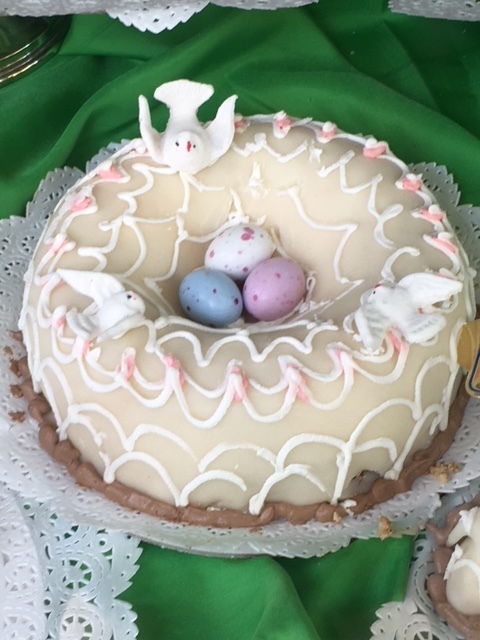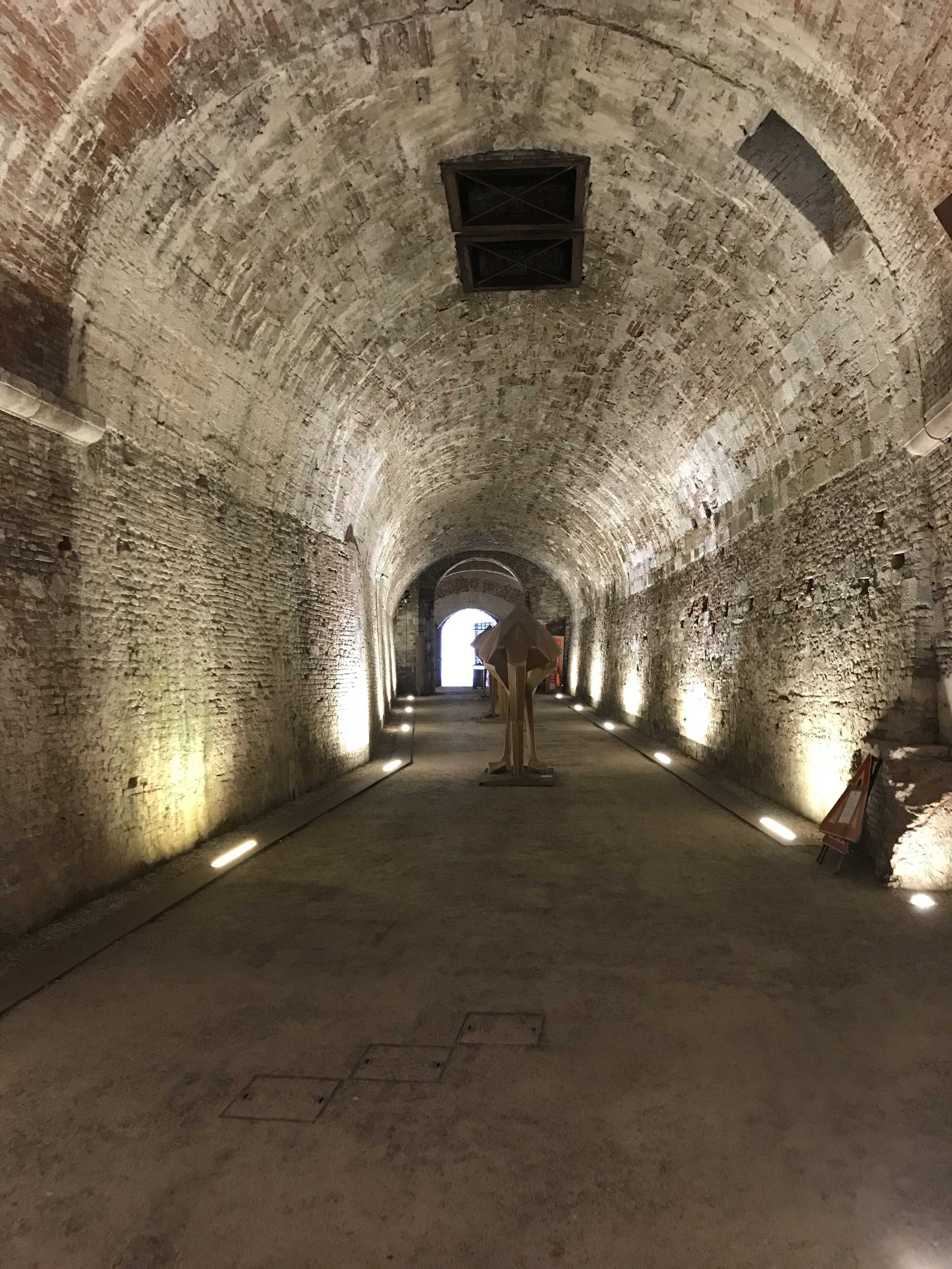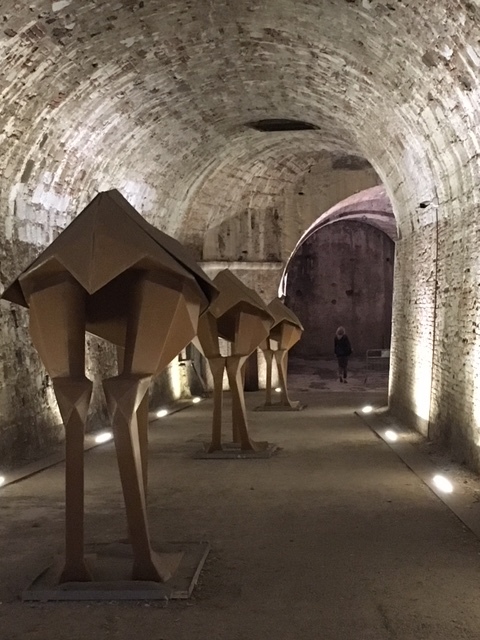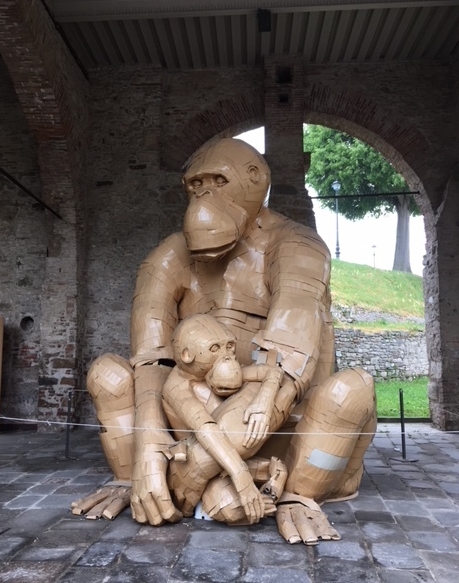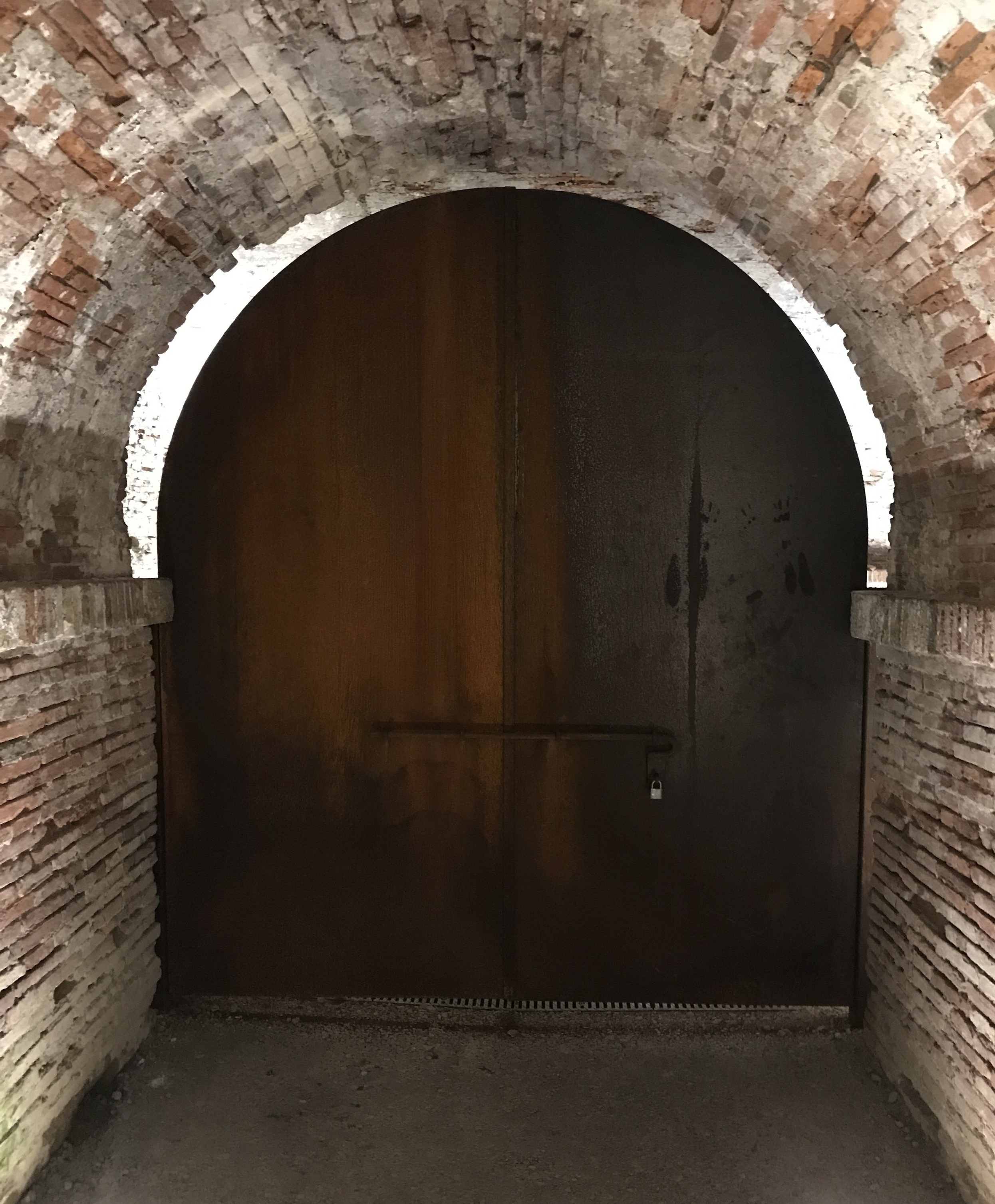Modern Sculpture in a Medieval Tuscan Town
The marble quarried in the Italian town of Carrara has inspired artists for centuries and been used to create some of the most well-known buildings and sculptures in Italy. Michelangelo’s David in Florence and the Pantheon in Rome are just two examples. More recent work by the Costa Rican artist Jorge Jiménez Deredia, who also studied and sculpted near Carrara, is on display around Lucca this summer. This type of temporary art exhibit is common here, gracing the squares and areas along the old city walls. The effect is that Lucca is an evolving art gallery of pieces that can be viewed, and touched, simply by wandering through the town. There is something unique and special about art in public squares, accessible to all, without the boundaries of museum walls.
This piece, on display in the remains of a Roman amphitheater, is from the series Genesis.
The Deredia exhibit, with its rounded and spherical figures in black or white, juxtaposed against buildings constructed six or seven centuries earlier, makes for a most interesting walk through town.
Deredia titled this work Mistero.
Deredia was born in Costa Rica in 1954. He moved to Italy 22 years later and started working in marble and bronze. His work has been displayed around the world and he has created permanent pieces for public spaces in Europe, Asia, the United States and Latin America during his career. He was honored by the Academy of Design Arts in Florence with the Academic Correspondant of the Class of Sculpture award - the same award given to Michelangelo, Titian, and Tintoretto.
In Lucca, three of his massive sculptures are displayed prominently in Piazza San Michele against the backdrop of San Michele in Foro, the basilica built over the ancient Roman Forum. Others are placed in piazzas around town and at Porta San Pietro. Deredia’s work will be in Lucca until September 10 of this year. Don’t miss it if you’re in Tuscany! It's a chance to see this amazing artist's work in what is essentially an open-air museum.
-post by JG






















